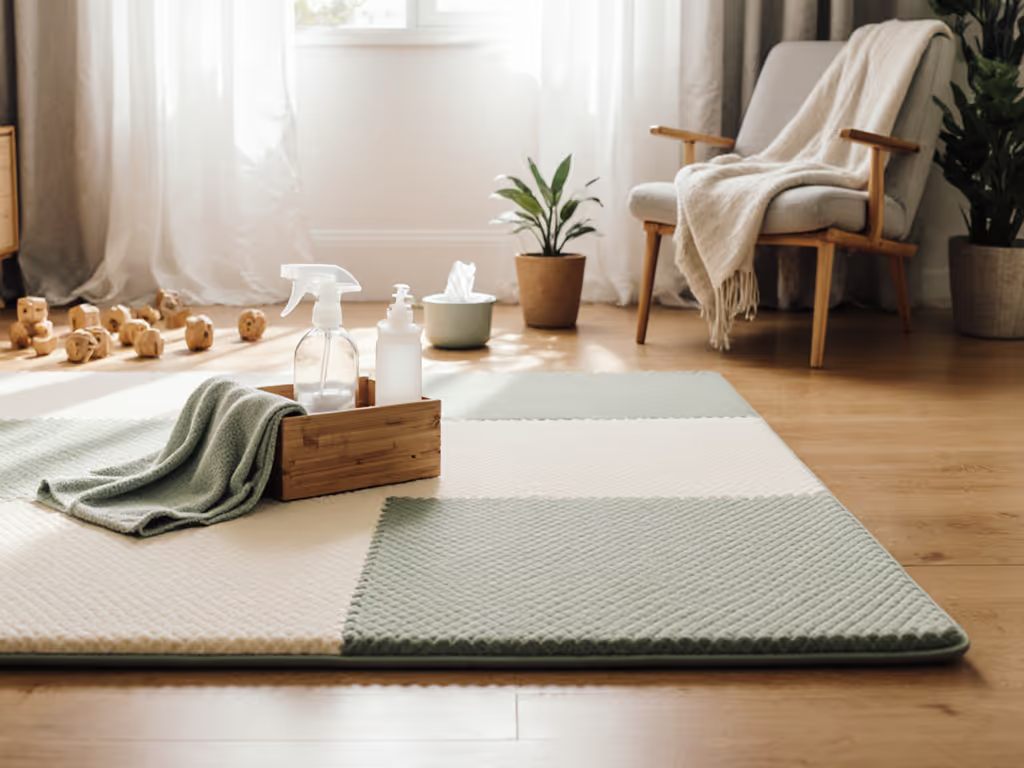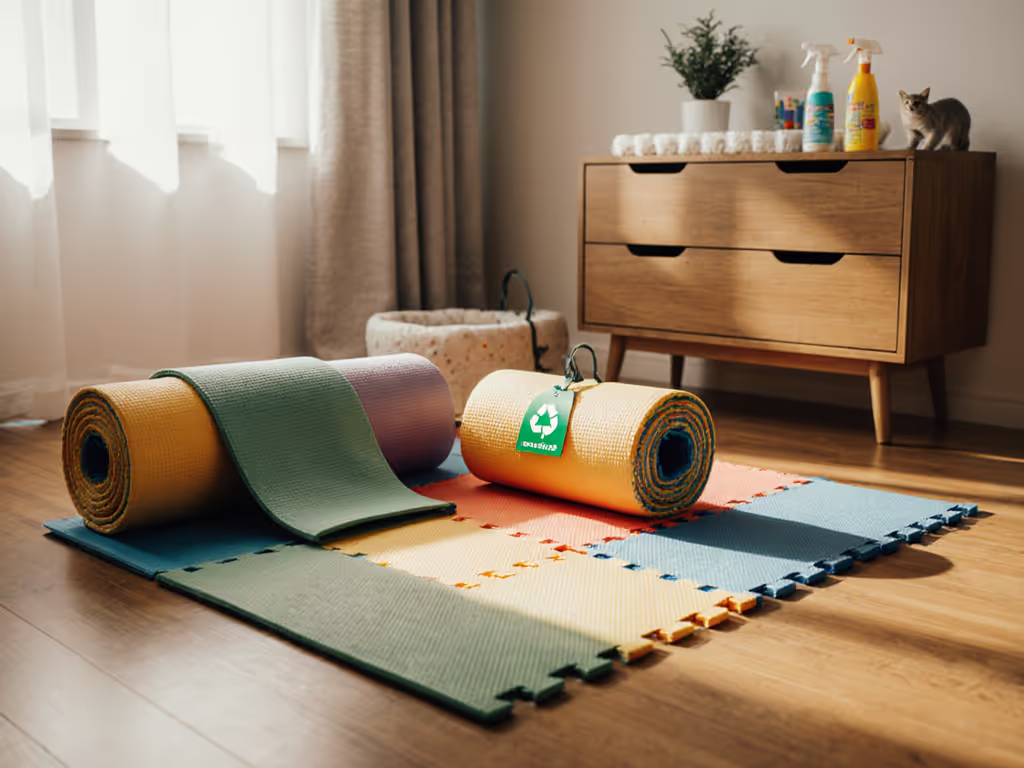
Non-Toxic Baby Play Mat Safety Checklist Verified
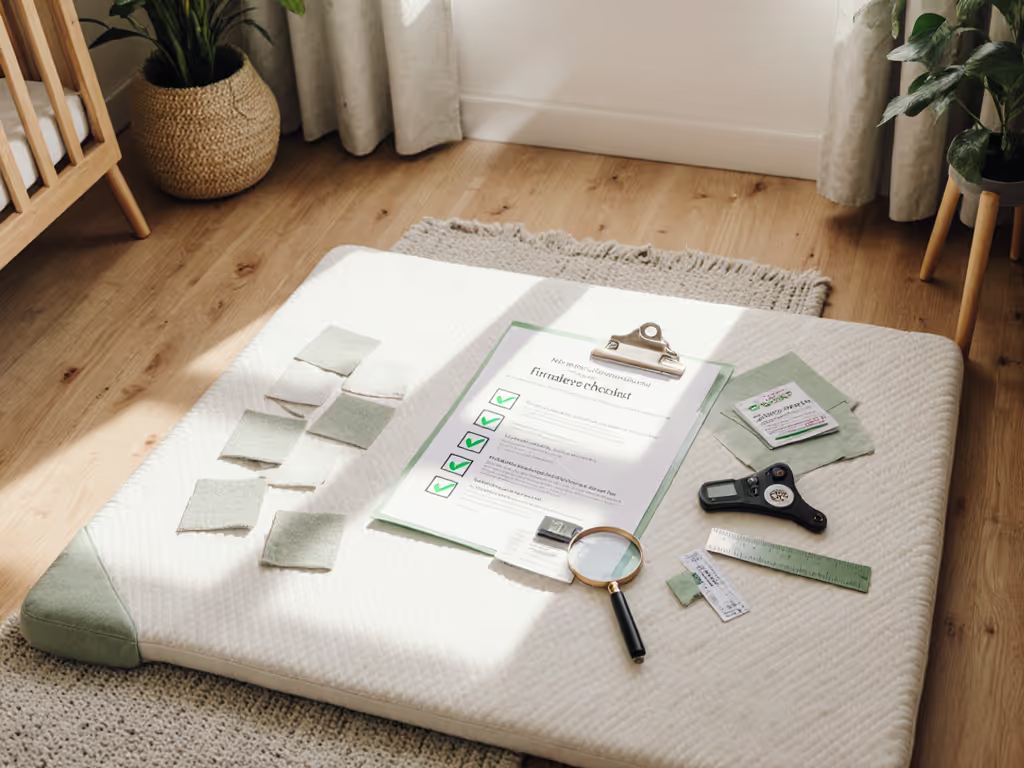
Your baby play mat isn't just cushioning, it is a spatial contract. In a 480-square-foot apartment where every inch earns its keep, a mat must pass two critical tests: rigorous chemical safety and seamless integration into tight living spaces. With the CPSC's new October 2024 infant support cushion standard banning inclines over 10° (capping height at 5cm/2") and mandating firmness/sidewall angle testing, baby play mat safety now has quantifiable boundaries. But for urban parents, certifications alone are not enough. What matters is how standards translate to your hardwood floors, sofa storage, and daily constraints. Here is how to verify compliance while making the mat justify its footprint.
Why Safety Standards Must Align with Small-Space Realities
Most safety guides parrot certification names without linking them to real-world use. Yet when your mat lives under a sofa six days a week, material integrity under compression matters as much as formamide levels. The CPSC's verified data confirms 79 infant deaths tied to poorly designed cushions (mostly from suffocation on inclines or soft surfaces). Their new rule directly addresses this with measurable thresholds:
- Firmness testing: Surfaces must resist conforming to an infant's face (tested with 1.2kg/2.6lb pressure probes).
- Sidewall angle >90°: Eliminates suffocation gaps between mat surface and raised edges.
- Max 10° incline (≤5cm/2" height): Prevents hazardous head positioning; forces low-profile designs that store flat.
- No restraints: Ensures mats are not marketed for unsupervised sleep.
- Permanent warning labels: Must state "Use only on floor. Never on elevated surfaces."
Square inches are a budget, make the mat earn them.
This is not bureaucratic red tape. That 5cm height limit? It means the mat must fold/roll to ≤7.6cm (3") thick to fit under standard sofas (min. 12.7cm/5" clearance). Compliance becomes space efficiency. For help choosing a storage-friendly design, see our foldable vs roll-up mats comparison.
Translating Certifications into Trust: A Parent's Decoding Guide
Do not fall for "non-toxic" claims without verified proof points. Cross-reference certifications against your specific pain points:
Critical Certifications & Their Small-Space Impact
| Certification | What It Tests | Why It Matters in Tight Quarters |
|---|---|---|
| CPSIA (USA) | Lead, phthalates, surface coatings | Ensures no residue transfers to hardwood floors when dragged daily; prevents laminate discoloration |
| OEKO-TEX Standard 100 | 350+ harmful substances (formaldehyde, pesticides) | Guarantees zero off-gassing in sealed rooms; critical for apartments with poor ventilation |
| EN 71-3 (EU) | Heavy metal migration | Stops staining on light-colored rugs when wet from spills |
| Greenguard Gold | VOC emissions | Essential for radiant-heated floors; prevents warping from chemical interactions |
| AS/NZS ISO 8124 | Mechanical safety, flammability | Confirms edges won't curl when folded weekly; resists pet-claw snags |
Key insight: Play mat safety standards now demand physical performance, not just chemical checks. A mat passing sidewall-angle testing won't trap toes when stored folded under furniture, reducing tripping hazards in narrow hallways.
The Formamide Reality Check
Toddlekind's testing data shows formamide (a foam-smell culprit) has EU limits of 200mg/kg vs. USA's 1,000mg/kg. But for small homes, even compliant levels matter:
- <200mg/kg: Safe for 10m²/107ft² rooms with standard airflow (passes Greenguard Gold).
- 200-500mg/kg: Requires mat to air 72+ hours before use (impractical) in studio apartments.
- >500mg/kg: Off-gassing persists; avoid in shared living/sleeping areas.
Always demand lab reports showing exact formamide levels, not just "meets CPSIA".
The Space-Efficiency Stress Test: 3 Questions Your Mat Must Pass
Certifications mean little if the mat fights your layout. Run these spatial diagnostics:
1. The Storage Simulation (Non-Negotiable for Renters)
- Test: Fold mat to its thinnest configuration. Measure thickness.
- Pass: ≤7.6cm (3") to fit under sofas/beds.
- Fail: >10.2cm (4") requires closet space (stealing 0.23m²/2.5ft² from your living area).
2. The Hardwood Slip Check (Critical for Laminate/Tiles)
- Test: Place mat on floor. Gently pull corner upward at 45°.
- Pass: Resists sliding >2.5cm (1") without adhesive residue.
- Fail: Requires double-sided tape (voids floor warranties).
3. The Multi-Use Footprint Audit
Track mat usage for 48 hours:
- Essential zone: Minimum 1.2m x 1.8m (4ft x 6ft) for tummy time through crawling.
- Guest mode: Must compress to ≤0.6m x 0.6m (2ft x 2ft) within 60 seconds.
- Noise penalty: >55dB impact sound (e.g., dropped toys) requires additional underlayment (+10cm depth).
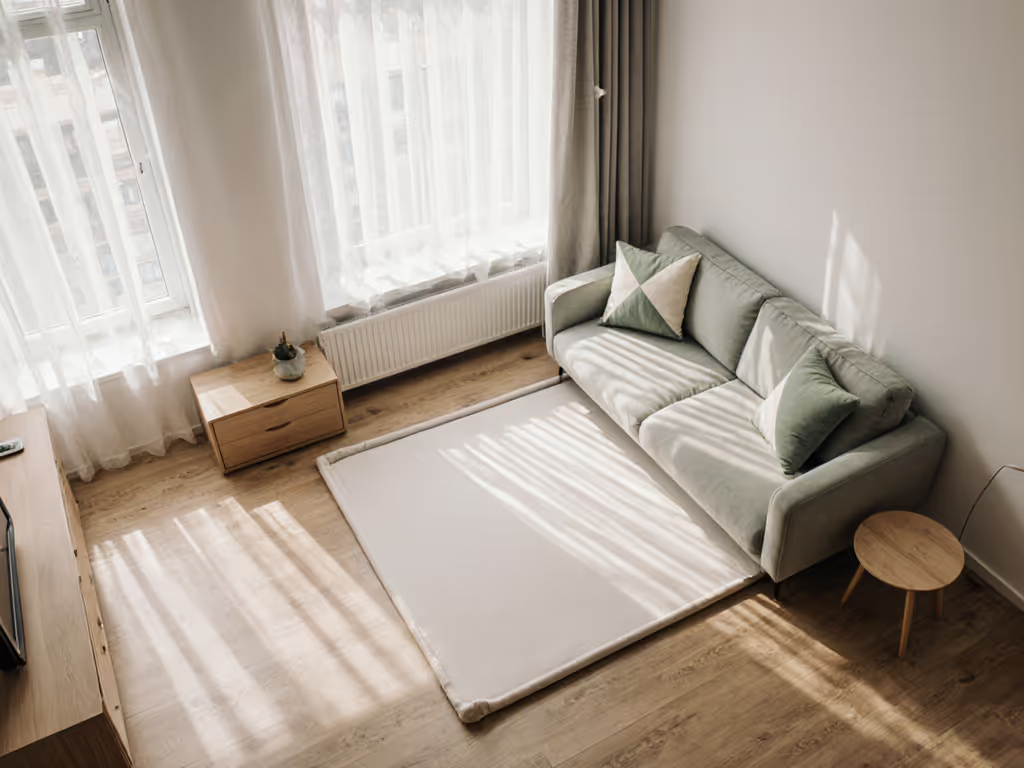
Actionable Next Steps: Verify Before You Buy
Do not gamble on safety claims. Execute this verification protocol:
- Demand the CPSC Post-2024 Compliance Sheet
- Manufacturers must provide sidewall angle/firmness test data. Decline if unavailable.
-
Cross-Check Certifications
-
Run the 60-Second Space Trial
- In-store: Time how long folding takes. >60 seconds = impractical for daily use.
- At home: Tape the mat's footprint on your floor for 24 hours. Map traffic flows and stroller parking spots (as I did in my son's walk-up).
- Calculate True Cost Efficiency
- Divide price by months of actual use (e.g., $120 mat used 18 months = $6.67/month).
- What it costs per month must undercut replacing disposable rugs or injury-related costs.
The Daily Safety Imperative
A non-toxic play mat is not defined by certifications alone, it is defined by surviving your home. That 10° incline rule? It forces designs thin enough to tuck under furniture, eliminating tripping hazards in tight spaces. The firmness test ensures no dangerous sinkage when baby pulls to stand on hardwood. Even play mat hazard warnings now serve spatial needs: "Place only on floor" prevents dangerous use on couches, a courtesy to space-strapped parents who lack dedicated nurseries.
Your final filter: Will this mat stay in use through toddlerhood? If it fights your footprint, it gets banished to the closet, defeating its safety purpose. Track usage honestly for one week. If it is rolled up >3 days, it has not earned its square inches. Prioritize verified safety and spatial harmony. Because the best mat is not the thickest, it is the one your home lives with daily.
Related Articles

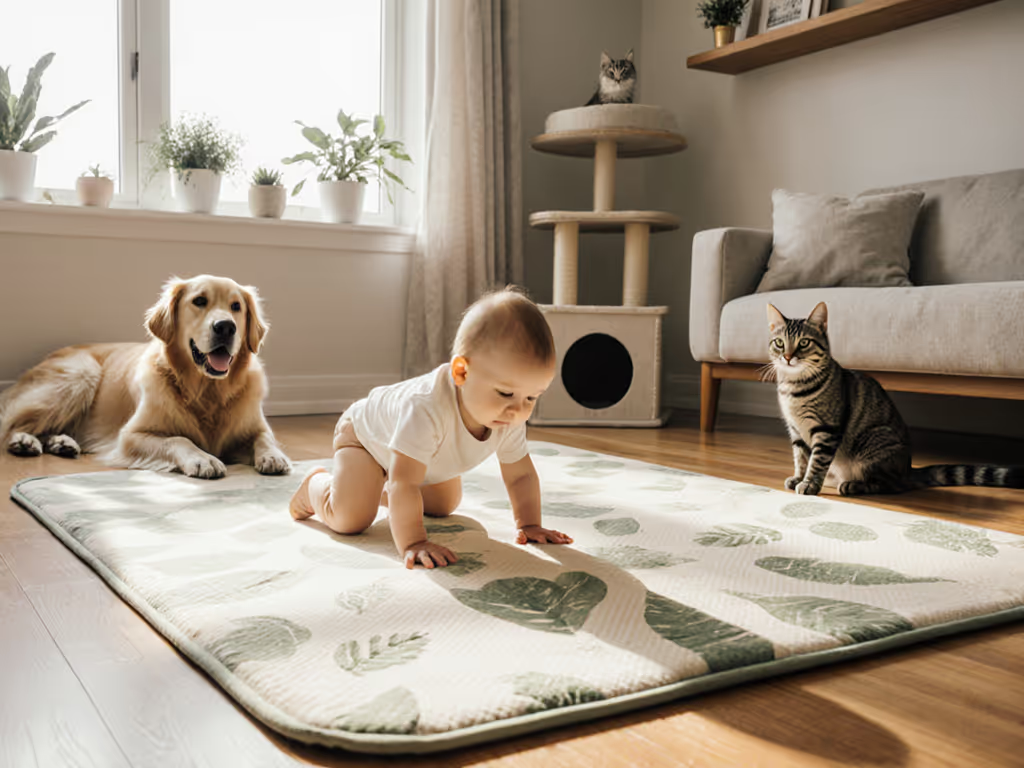
Non-Toxic Baby Play Mats for Multi-Species Homes
